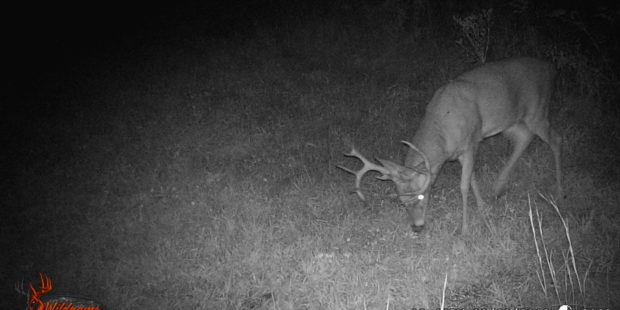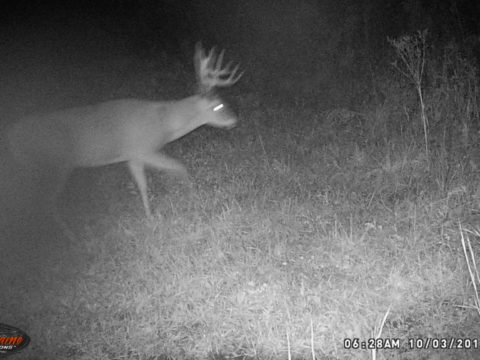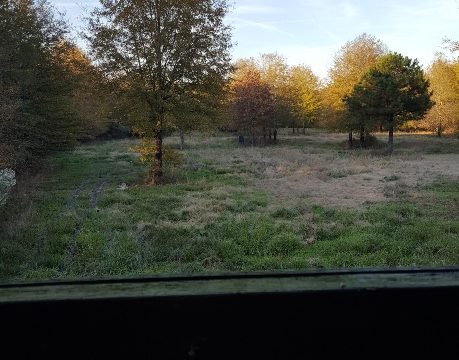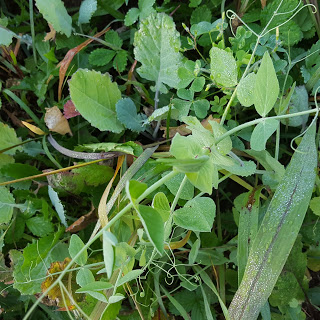
by Eric Hall
 |
| Ohio Whitetail Hardwood |
It is a battle we all wage within our minds, “Why am I not seeing mature whitetail bucks?” I personally fought this battle during the 2017 season. Countless hours in the stand with not one “shooter” buck encounter. This past season is a far cry from my previous four years where multiple encounters had been the norm.
What had changed? Why was this season so frustrating? This line of thinking is not uncommon in the whitetail hunting community. To help ease my mind and also prepare for the upcoming season, I decided to put together a list of the top five reasons we do not see mature bucks.
Habitat:
Habitat plays a key role in not only the growth and development of mature bucks but the ability to hold them on your property. Every woodlot or farm does not hold a mature whitetail buck. Deer, in general, will seek out the best cover and best food and make that their home. Mature bucks are a completely different animal from does or young bucks. These elusive creatures seek out that best of the best and that is where they call home.
A common theme of the Whitetail OCD blog and almost every whitetail article ever written is a deer’s need for food, water and bedding cover. It is the combination of these three that create the perfect mature buck habitat. If your property doesn’t have these, then chances are you will not have many (if any) big buck encounters.
All is not lost if your parcel is lacking in habitat. It is possible to create habitat improvements to attract and hold whitetail deer. A great article was written by Jeff Sturgis on the Whitetail Habitat Solutions blog about ways to improve your property. Jeff discusses the benefits of hinge cutting, travel corridors, waterholes and other great ways to increase the likelihood that a mature buck calls your spot home. If you own the property, look into these recommendations. If you do not own the property and it is private, try and partner with the landowner to see what they will and will not allow. Remember every little bit helps.
Pressure:
We have all had that feeling when the hair on the back of our neck stands up and a cold chill rushes through our body Every instinct about us is saying “SOMETHING IS WRONG.” This is the feeling deer, especially mature bucks get when they sense any type of hunting pressure. Bucks do not live to maturity without listening to their senses and adapting to increased human intrusion.
Pressure can come from yourself, other hunters on the property and even the neighbors. No matter where the pressure is originating, deer will react negatively. The old saying goes: “The first time in a tree stand is your best opportunity.” Every hunt after that declines as the pressure on the deer increases. This notion was validated in a scientific study on pressured whitetails by Dr. Stephen Ditchkoff featured 11/24/2017 on the Deer and Deer Hunting site. The article notes the decline in stand production as usage increases and the rise in production as the days between the last sit in that stand increases. Face it we all over-hunt stands.
Dr, Ditchkoff also notes that the deer in the study did not completely alter their pattern, instead they moved their travel/bed just enough to avoid the “exposure zone” where the hunting pressure was realized. A quote from the article brings my point of pressure and seeing deer to light:
In the end, it is their ability (and our inability) to adapt to the pressure that dictates the line between success and failure.
Access:
It is hard to see, let alone kill, a mature whitetail when you are bumping deer on the way in to your stand. Access is everything to a deer hunter, especially a hunter looking to kill a mature buck. Countless pros have discussed access at length as their key to killing mature deer. I know from my personal experience with a farm that I hunt that limited access routes can make hunting whitetails almost impossible. If they see you going in and out, it is game over for that tree stand.
My situation on this farm is that there is only one way in and out. Access is restricted to an open hayfield with agriculture fields on the sides. There is a pond on the property and fence lines that I try to use for cover as I access the woods. The agricultural fields on the sides are both a blessing and a curse. The food holding deer is a blessing and, yes, the food holding the deer is the curse when trying to hunt mornings. I have all but given up trying to hunt early mornings on this farm. I continually bump deer on the way in no matter how long before daylight. My adjustment has been afternoons/evening hunts or during the rut, accessing for midday to catch a buck cruising.
A great access scenario is using a ditch that allows in and out access traveling just under the sightline from the woods. Properly cleared prior to season, these ditches and small creeks are a fantastic way to get to your stand without disturbing deer
Cornfields and planted screens provide great access as well. Slipping through the cornfield to a blind or a tree stand keeps you out of the prying eyes of the herd. Switchgrass screens and other plantings are a great option to get into and out of the woods undetected
If you are not seeing mature deer, look at your access routes and determine if there is a better way to get to your stand without bumping the deer. If not, reevaluate when you hunt that particular stand or go mobile with a run and gun setup.
Buck to Doe Ratio:
A common thought is if you have a lot of does, you will have mature bucks. This fallacy is one of the biggest reasons mature deer encounters are limited. The ratio of bucks to doe must be in balance to support a mature whitetail.
High deer populations lead to increased social stress on the deer herd. Mature bucks are intolerant of this social stress and will move off to find seclusion. In fact, out of balance buck to doe ratios in favor of the doe will leave your landscape barren of bucks because there just isn’t enough room for them to exist.
Out of balance ratios also cause nourishment stress on the herd. High deer numbers, especially large doe groups with fawns, can quickly deplete an area’s food resources. Overbrowsing during the cold winter months will leave the deer no choice but to leave and seek food. Sometimes the deer will return to their original area but couple social stress, human intrusion, and a lack of food and a mature buck will relocate permanently.
Too many does impact the rut activity and limits mature buck encounters. If a mature deer does not have to look hard for the next available estrous doe, he is less likely to cross paths with a hunter. The closer in balance one to one the ratio is, the more intense the rut and the higher the likelihood a mature buck will be on his feet cruising. Areas with out of balance ratios will see a slower, less intense rut. There will be encounters with immature animals, but the larger mature deer will be locked down longer and continue to lock down until the breeding is over.
Scent Control:
This one seemed too much like common sense to add to this list, but without controlling scent you are not going to see any deer, much less a mature whitetail buck. I am not advocating any particular method of scent control. My point is that if you are not seeing mature deer, you need to consider how you are dealing with his nose.
We will tackle the universal method of scent control, playing the wind. The terrain impacts the wind. Just because your weather app on your phone says you have the correct wind for your location doesn’t mean your stand is in the right place for that wind. The terrain features of the whitetail woods impact how a deer will use the area because of how the wind moves within it.
A great technique for ensuring you stand is set for the wind you need is to use a smoke bomb. Find the prevailing wind for your area and go in before the leaves are on the trees. Set off a smoke bomb and watch how the smoke travels through the woods. Do this in both the morning and the evening to account for thermal currents. You may be surprised that the stand you felt was perfect is the reason you are not seeing the buck of a lifetime. Using what you learn, adjust your stand, access, etc. to increase your odds on a mature buck encounter.
If you are not seeing mature deer, do not lose faith. Take the time to investigate your property during the offseason. Look at your habitat, pressure, access, ratio and scent control to see what adjustments need to be made. The offseason is the time to assess a situation that has yielded less than desirable results.




